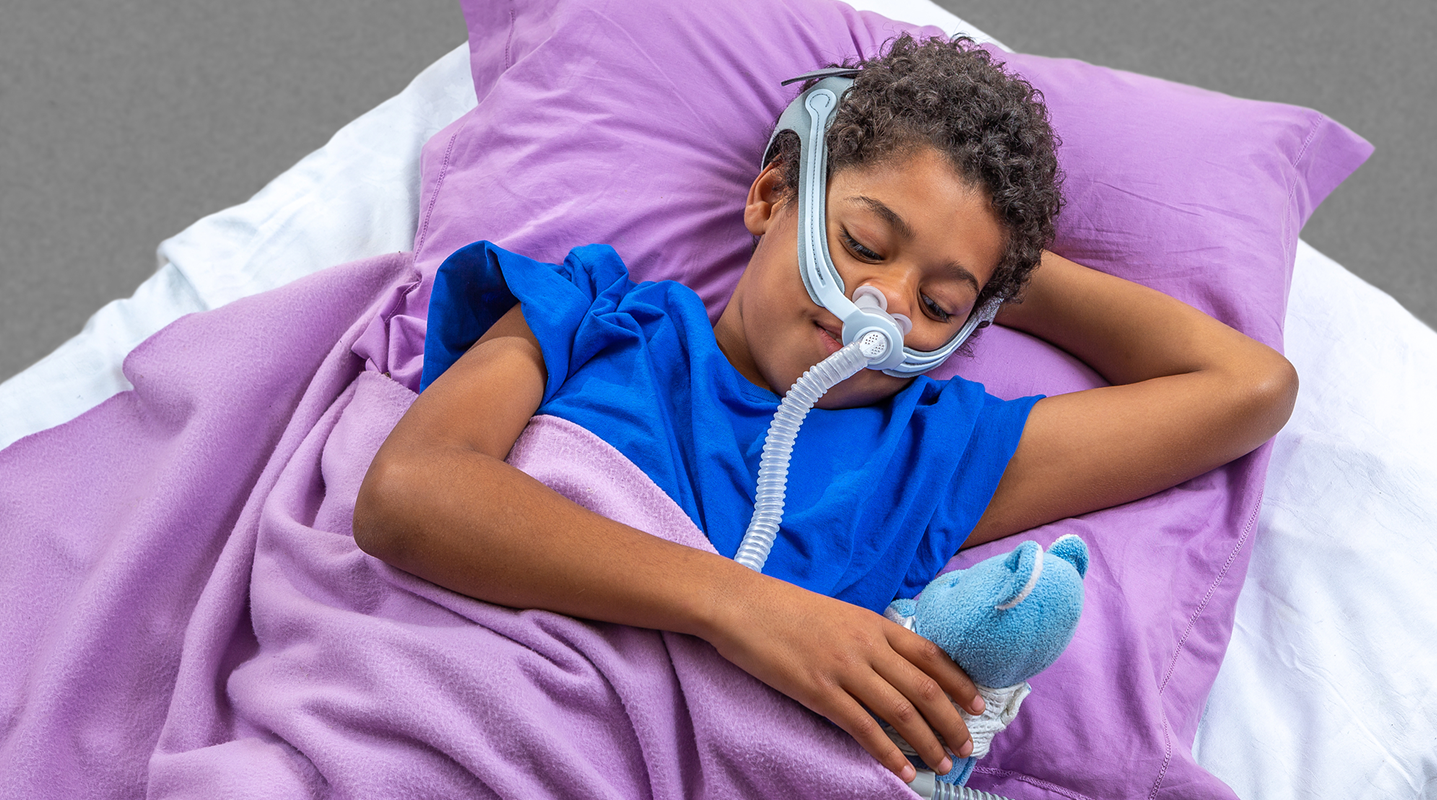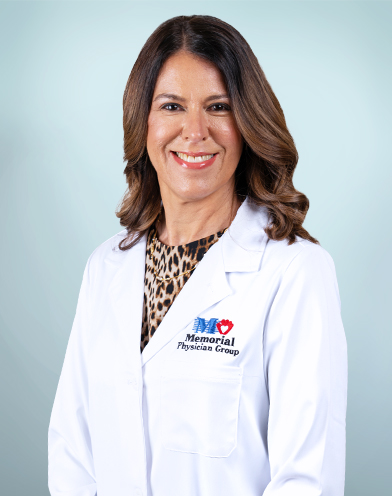Can Children Have Sleep Apnea
May 15, 2023

Obstructive sleep apnea affects both children and adults, though the signs and symptoms are a bit different in kids. If you think your child has sleep apnea, it’s important to know what causes it, what signs to look for and how to get help.
Galia Napchan-Pomerantz, MD, a pediatric pulmonologist at Joe DiMaggio Children’s Hospital, describes what sleep apnea is, the complications it can cause, and her unique approach to helping patients and families get restful sleep.
What is pediatric obstructive sleep apnea?
Sleep apnea generally refers to changes in how a person breathes while they sleep. Obstructive sleep apnea, the most common type, is caused by a blockage in a child’s airway. This blockage either decreases airflow or completely cuts it off and forces a child to work harder to breathe.
When people think of sleep apnea, they often think of loud or excessive snoring. However, Dr. Napchan-Pomerantz highlights that snoring is not the only symptom in children, and parents need to watch for other signs.
“The biggest thing to look for is whether your child wakes up functioning like you would expect them to. Children should be waking up feeling refreshed, ready to learn and ready to play,” says Dr. Napchan-Pomerantz. “If they aren’t getting restful sleep, children can struggle to pay attention and become more hyperactive and aggressive.”
In addition to behavioral changes, bed-wetting could indicate sleep apnea in children.
“This is especially true in kids who haven’t had a bed-wetting problem before but suddenly start wetting the bed,” says Dr. Napchan-Pomerantz.
What causes sleep apnea?
Several things can cause sleep apnea, but the key factor is that something is blocking a child’s airway, says Dr. Napchan-Pomerantz.
“With obstructive sleep apnea, something is blocking the airway. So, we want to look at what is causing that obstruction. We start in the nose and look for signs of significant congestion, such as from allergies or, we’re noticing, second-hand cigarette smoke. Then, we work inwards to see if there are enlarged tonsils and adenoids (tissue in the upper throat designed to trap viruses and bacteria). We also look at the shape of a child’s face and if they were born with any features that could affect their airway, such as an abnormal chin,” she says.
Because children grow so much during this period, it’s not uncommon for them to start showing sleep apnea symptoms anywhere between ages 2 and 5. The tonsils or adenoids usually peak in their growth during this time and often disrupt sleep.
More recently, Dr. Napchan-Pomerantz has noticed that obesity contributes to sleep apnea in children, even if we treat other causes.
“Extra fat tissue compresses the airways from the outside,” she says. “Even with surgery to remove adenoids and tonsils or treatment for other obstructions, children who are obese don’t often see much improvement.”
What are the complications of sleep apnea?
In mild cases, the most common complication of untreated obstructive sleep apnea is poor school performance.
“You expect when someone goes to sleep, 90% of the time, they are sleeping. If your kid is restless most of the night or wakes up too much at night, they aren’t getting the sleep they need. This can affect their behavior and academic achievement at school,” says Dr. Napchan-Pomerantz.
In more serious cases, untreated obstructive sleep apnea can have life-threatening consequences.
“When a child doesn’t get enough airflow, blood vessels near the lungs narrow. And narrow blood vessels force the heart to work harder, leading to heart problems like pulmonary hypertension, or high blood pressure in blood vessels that connect the heart and lungs. This is the most dangerous part of untreated, severe obstructive sleep apnea,” says Dr. Napchan-Pomerantz.
How is sleep apnea diagnosed?
Though you may notice several signs that your child has sleep apnea, a sleep study is the only way to know for sure. If your child sees an ear, nose and throat (ENT) specialist, they can refer them to the Children’s Sleep Lab at Joe DiMaggio Children’s Hospital where specialists can monitor their sleep.
“We do about 700 sleep studies per year. And the quality of these sleep studies is exceptional,” says Dr. Napchan-Pomerantz. “Our technicians receive state-of-the-art training to work with kids and complex cases. Their expertise helps us provide the best care possible to patients and their families.”
How does Joe DiMaggio Children’s Hospital treat sleep apnea?
Many different things can cause sleep apnea, so the specialists at Joe DiMaggio Children’s Hospital take a collaborative approach to help ensure your child gets the care they need.
“We work closely with a range of specialists, including our ENT specialists, allergy specialists, and craniofacial specialists. We all work under one roof, which reduces the wait time to see a specialist,” says Dr. Napchan-Pomerantz.
Once they diagnose sleep apnea, the providers at Joe DiMaggio Children’s Hospital usually treat the condition using the following strategies, often in this order:
- Treat allergies and any congestion that may block the airway through the nose
- Use surgery for enlarged tonsils or adenoids
- Recommend lifestyle changes, such as diet changes, to help kids lose excess weight
- Prescribe a continuous positive airway pressure (CPAP) machine to help keep your child’s airway open while sleeping, often if other treatments don’t work. These machines are worn at night and deliver air.
Get the pediatric care your child needs
If you have concerns about your child’s sleep, don’t wait. Our family-centered providers, such as Dr. Napchan-Pomerantz, are here to help you understand what’s causing your child’s sleep problems. Learn more about how our providers and the expert technicians at our Children’s Sleep Lab can help your child get the sleep they need.

